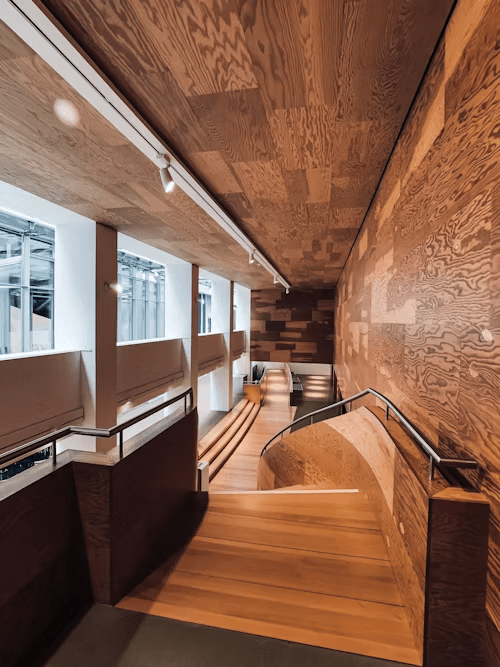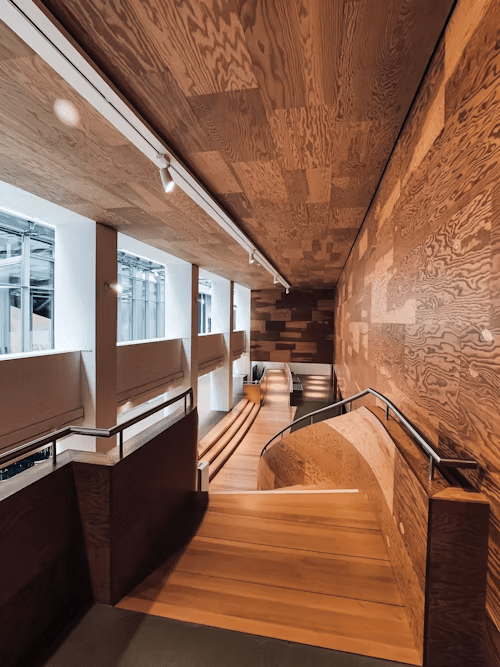As experts in wood restoration and finishing, we at OFScorp are excited to share our insights into the most effective wood finishing methods that have defined our success in the industry. Our journey, deeply rooted in the diverse landscapes of New England and Westchester County, has endowed us with a rich tapestry of experiences across various sectors. This wealth of knowledge has been pivotal in honing our skills and approaches, particularly when it comes to wood finishing and wood restoration services.
Our aim in this blog is to illuminate the top techniques that ensure every piece of woodwork we touch is not just restored but also infused with a renewed sense of beauty and durability. From educational facilities to places of worship, each project we undertake is a testament to our dedication to excellence and attention to detail. Join us as we delve into the world of wood refinishing, exploring the techniques that breathe life into worn and treasured pieces, ensuring they stand the test of time with elegance and durability.
Method 1: Custom Staining and Color Blending
Custom staining and color blending are not just processes; they are forms of artistry that breathe new life into wood. These upcycling techniques are essential in enhancing the natural grain and beauty of the wood, ensuring each piece not only matches the aesthetic of the space but also tells its own unique story.
The process begins with a meticulous selection of stains, considering factors such as the wood’s natural hue, grain pattern, and the desired final appearance. Expert artisans then use the above-mentioned wood finishing methods to skillfully blend these stains, achieving a perfect harmony of color that complements the wood’s inherent characteristics. The result is a seamless, uniform finish that enhances the wood’s natural beauty while meeting the specific design requirements of each project.
Case Example: In a project for a boutique hotel lobby, a team expertly blends stains to match the unique, dark walnut finish of the existing woodwork. The custom stain not only revitalized the area but also ensured consistency in the aesthetic, leaving the lobby with a harmonious and welcoming ambiance.
Method 2: Meticulous Scratch Repair and Dent Removal

Wood, with its warmth and elegance, is susceptible to wear and tear over time. Scratch repair and dent removal are crucial in restoring the wood’s pristine condition, ensuring each piece retains its structural integrity and aesthetic appeal. This process involves a careful examination of the damaged areas, followed by precise techniques to gently remove or fill in scratches and dents.
The goal is to make these imperfections virtually disappear, blending them seamlessly with the surrounding area. Skilled craftsmen use a combination of fine sanding, filling, and finishing techniques to achieve a surface that looks as good as new. The attention to detail in this process ensures the wood’s beauty is preserved, allowing it to stand the test of time gracefully.
Case Example: A conference table in a corporate boardroom, marred by years of meetings and paperwork, is brought back to life. Precise scratch repair and dent removal techniques meticulously restored the table’s surface, making previous damages virtually invisible and reviving the table’s dignified presence.
Method 3: Advanced Architectural Millwork Finishing
Architectural millwork finishing is one of the most sophisticated wood finishing methods—it accentuates the intricate details and contours of wood features, transforming them into stunning architectural elements. This method involves a series of steps, each tailored to bring out the character and depth of the wood.
It starts with precise sanding techniques to create a flawless base. Then, specialized finishes are applied, enhancing the wood’s texture and adding a layer of protection. This process not only elevates the aesthetic appeal of the woodwork but also ensures its durability and resistance to wear, making it a focal point in any space.
Case Example: A historic library’s ornate mahogany bookcases are showing signs of age. Advanced millwork finishing restores their intricate details and rich color while also applying a durable finish to protect against future wear, preserving the library’s esteemed atmosphere.
Periodic Maintenance Plans for Ensuring the Longevity of Wood Finishes


To maintain the elegance and durability of wood finishes, periodic maintenance is essential. This proactive approach involves regular inspections and touch-ups to ensure the wood remains in its best condition. It’s not just about fixing issues as they arise; it’s about preventing them.
By implementing a tailored maintenance plan, the longevity of the wood is significantly extended. This method includes cleaning, oiling, and reapplying protective coatings as needed, ensuring the wood retains its luster and strength over time. It’s a commitment to preserving the beauty and functionality of the wood, ensuring it continues to enhance spaces with its natural charm.
Case Example: A periodic maintenance plan for extensive oak millwork is implemented for a high-end residential complex. Regular inspections and touch-ups keep the millwork in pristine condition, showcasing the wood’s natural beauty and ensuring its longevity for years to come.
Eco-Friendly Maintenance Tips for Teak & Ipe Wood Finishes
Eco-friendly teak and ipe wood maintenance is an environmentally conscious approach to preserving these resilient, high-quality woods often used in outdoor settings. These wood finishing methods prioritize the use of sustainable, non-toxic materials and techniques to clean, treat, and protect the wood. Initially, the wood is gently cleaned to remove dirt and mildew without harming its natural oils.
Then, environmentally friendly products are applied to enhance the wood’s rich color and grain, providing a natural, water-resistant finish. Regular maintenance ensures teak and ipe wood features remain durable and visually stunning, all while aligning with eco-conscious values and practices.
Case Example: An oceanfront property with extensive ipe decking seeks a sustainable maintenance solution. An eco-friendly teak and ipe wood maintenance program involves gentle cleaning and application of natural, waterproofing, and toxin-free products, safeguarding the deck’s durability and rich appearance against the harsh seaside elements.
Mastering Wood Finishing Methods
In the intricate world of wood finishing, the right methods not only restore but transform. Each technique, from custom staining to eco-friendly maintenance, is a testament to the craftsmanship and attention to detail that is poured into every project. Whether it’s preserving the historical integrity of a piece or ensuring the longevity of frequently used furnishings, these methods stand as pillars of quality and durability.
At OFScorp, we understand the significance of every grain and texture in wood, and we dedicate our expertise to ensuring each project we undertake is a reflection of our commitment to excellence. For those seeking to breathe new life into their woodwork or preserve the timeless beauty of their pieces, OFScorp stands ready to bring your vision to fruition with unmatched precision and care. Our wood finishing and wood restoration techniques stand the test of time.
